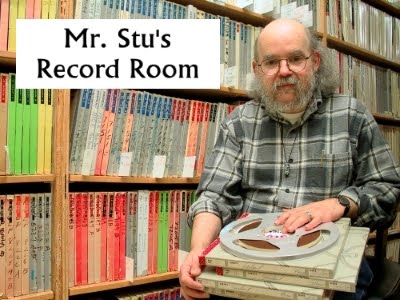Fame came late for tenor saxophonist Joe Henderson, who achieved a degree of prominence with the public on the basis of a series of thematic albums for Verve Records in the early 1990's. Better late than never, I suppose, but musicians had been hip to his playing since he burst into the scene with his first Blue Note recordings in 1963. Think for a moment about how hard it was for tenormen to break through in that period, when giants like Coleman Hawkins, Ben Webster, Stan Getz and Zoot Sims were still around, along with newer stars like John Coltrane, Sonny Rollins, Wayne Shorter, Booker Ervin and so many others who were making their marks in the jazz world. Even with all that competition, Henderson managed to make himself heard. With the 5 CD set of The Complete Joe Henderson Blue Note Studio Sessions, Mosaic Records has collected his five albums as a leader for Blue Note from 1963 to 1966 and two albums by trumpeter and mentor Kenny Dorham (Una Mas, Henderson’s recording debut, and Trompeta Toccata). There was also room for the initial recordings of five Henderson originals that first appeared on Blue Note sessions where he was a sideman. Mosaic producer Michael Cuscuna, who probably knows the Blue Note catalog better than anyone, writes that he was “astounded” that there were only 7 albums with Henderson as leader or co-leader with Dorham, considering how ubiquitous Henderson was as a sideman for the label. He brought his tart and exciting tenor sound to such classic outings as The Sidewinder by trumpeter Lee Morgan, Idle Moments by guitarist Grant Green, Black Fire and Point Of Departure by pianist Andrew Hill, Song For My Father by pianist Horace Silver, and more, amassing 20 sideman appearances for the label. Cuscuna concludes that he “cannot think of a musician of more impact and breadth in those years.” High praise, indeed, and totally deserved. To spend hours listening to and absorbing the great music on these discs is to obtain a serious education in the state of jazz at the time. Just consider the drummers you’ll encounter: Tony Williams, Pete La Roca, Elvin Jones, Albert “Tootie” Heath, and Joe Chambers. Or take note of the brilliant roster of pianists on these dates: Herbie Hancock, McCoy Tyner, Andrew Hill, and Tommy Flanagan. Henderson was matched with many of the best players of the era, and clearly held his own in such stellar company. Having the superb trumpeter Kenny Dorham as a close friend and frequent front line partner surely helped him to gain respect on the scene. As Bob Blumenthal writes in his liner notes for the set, “Established artists consistently replenished the Blue Note roster by introducing future stars with a gift for compatibility that nurtured both their own growth and the label’s legend.” The Dorham-Henderson connection is exemplary in this regard. After recording with Dorham on the trumpeter’s Una Mas date on April 1, 1963, it was just two months later, on June 3, that Henderson led his own debut as a leader. The tellingly titled Page One, a quintet session with Dorham and a rhythm section of pianist Tyner, bassist Butch Warren, and La Roca on drums, introduced a pair of frequently performed jazz compositions in Dorham’s Blue Bossa and Henderson’s Recorda-Me. It’s a sign of the high regard that Blue Note honchos Alfred Lion and Francis Wolff had for the saxophonist that Page One actually appeared in stores that September, a few months before Una Mas was released. Henderson was immensely busy during the less than three years that separate Una Mas from his final Blue Note outing as a leader, Mode For Joe, recorded at the end of January 1966, but his inspiration never flags either as an improviser or a composer. His boundless imagination, combined with an astute sense of harmonic development and a rhythmically propulsive approach to the music allowed him to fit in virtually everywhere, and Blue Note made the most of it over an intense few years. In the great Mosaic tradition, this set includes three previously unissued alternate takes plus the usual wealth of intimate photographs taken at the recording sessions by Francis Wolff. The newly remastered albums have never sounded better. The collection is limited to 2,500 copies, so get it while you can. Highly recommended.
Mosaic MD5-271; Disc 1 (79:00), Disc 2 (76:41), Disc 3 (76:45); Disc 4 (78:39); Disc 5 (59:11), with the complete albums Una Mas (by Kenny Dorham), Page One, Our Thing, In ‘N Out, Trompeta Toccata (Dorham), Inner Urge, and Mode For Joe, plus tracks from Little Johnny C. (by Johnny Coles), Step Lightly (Blue Mitchell), The Kicker (Bobby Hutcherson), The Cape Verdean Blues (Horace Silver), and Unity (Larry Young). There are three previously unissued alternate takes, of La Mesha and Homestretch on Page One, and the title track on Our Thing. For detailed discographical information, go here.


